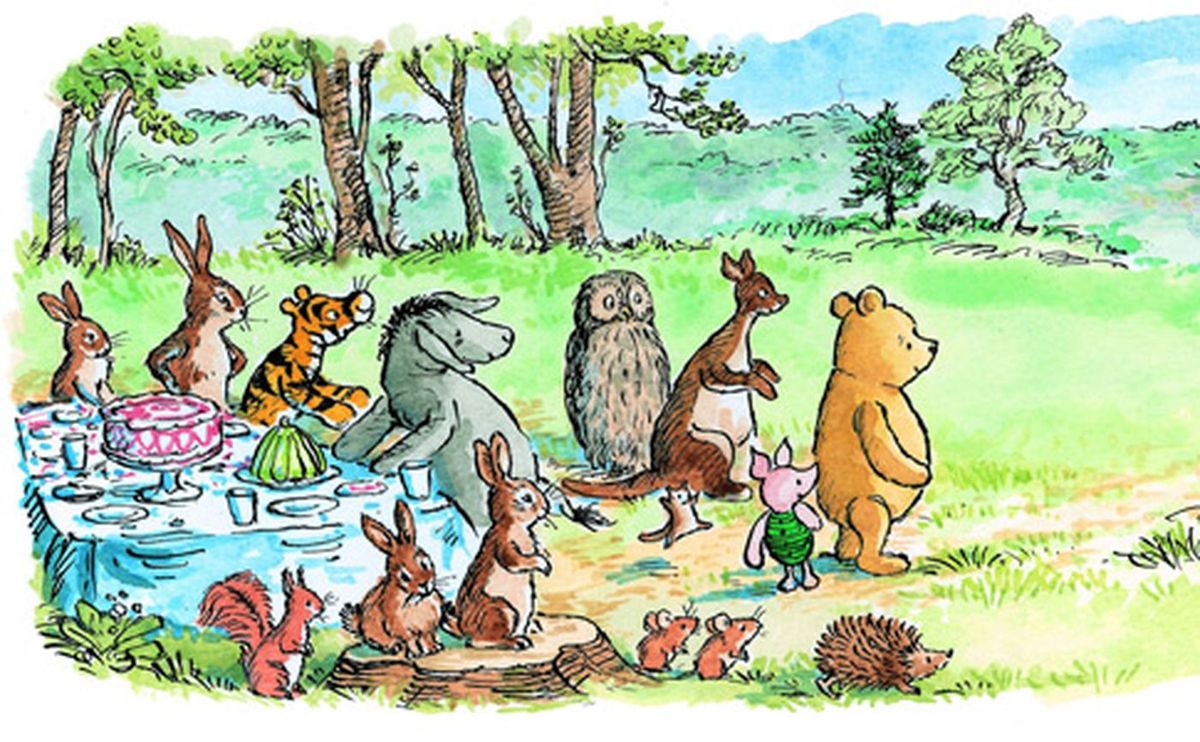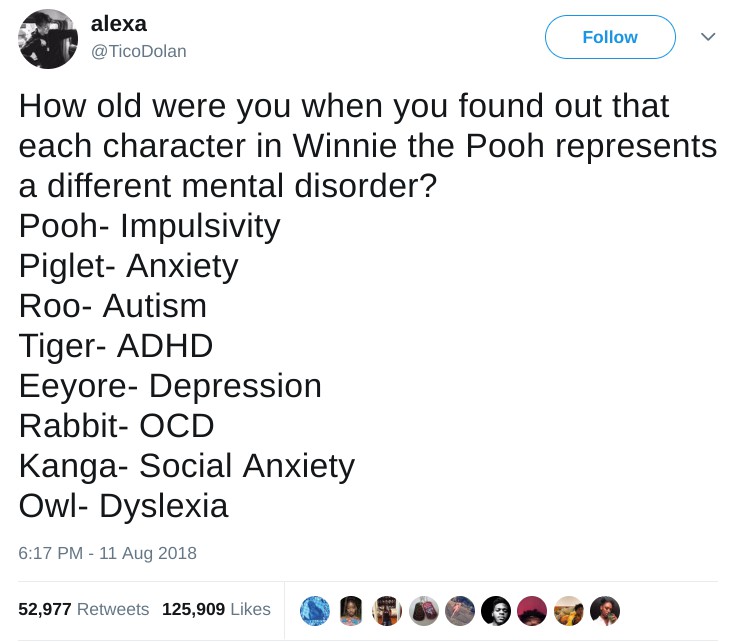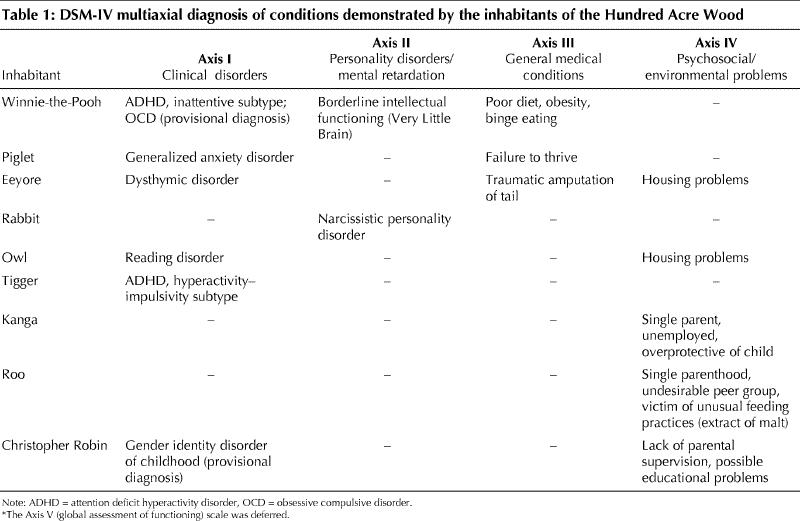In August 2018, coincident with the release of the Disney film Christopher Robin, a new generation of Winnie the Pooh fans were exposed to a popular theory holding that the animal characters who populate the Hundred Acre Wood in A.A. Milne's most famous works were created to represent various mental disorders:
Like similar theories positing that the seven characters on the sitcom Gilligan's Island personified the seven deadly sins, or that the five main characters in the animated children's show Scooby-Doo were each based on one of five eastern colleges, the notion that characters such as Eeyore, Rabbit, Piglet, Roo, and even Pooh himself represent various mental disorders is a fanciful latter-day interpretation and not an expression of the authorial intent of Pooh creator A.A. Milne.
This theory was first popularized in a tongue-in-cheek paper published in 2000 (more than 70 years after the appearance of the first Winnie-the-Pooh book) in the Canadian Medical Association Journal.
The BBC reported at the time that lead researcher and primary author Sarah Shea's intention was to "remind people that anyone can have disorders." The introduction to the study also noted that the characters were diagnosed with different mental disorders by a "group of modern neurodevelopmentalists," not Milne:
On the surface it is an innocent world: Christopher Robin, living in a beautiful forest surrounded by his loyal animal friends. Generations of readers of A.A. Milne's Winnie-the-Pooh stories have enjoyed these seemingly benign tales. However, perspectives change with time, and it is clear to our group of modern neurodevelopmentalists that these are in fact stories of Seriously Troubled Individuals, many of whom meet DSM-IV3 criteria for significant disorders (Table 1). We have done an exhaustive review of the works of A.A. Milne and offer our conclusions about the inhabitants of the Hundred Acre Wood in hopes that our observations will help the medical community understand that there is a Dark Underside to this world.
Although the observations made by Shea and her team may fall in line with modern medical standards, the paper's humorous tone makes it clear that these determinations weren't offered with a straight face. Take this selection from Roo's diagnosis, which ended with a prediction about the young kangaroo's dismal future:
We predict we will someday see a delinquent, jaded, adolescent Roo hanging out late at night at the top of the forest, the ground littered with broken bottles of extract of malt and the butts of smoked thistles. We think that this will be Roo’s reality, in part because of a second issue. Roo’s closest friend is Tigger, who is not a good Role Model. Peer influences strongly affect outcome.
The researchers also suggested that an intervention might be in order for Winnie-the-Pooh himself, as the fictional character likely suffers from "Shaken Bear Syndrome" (a play on the medical term "Shaken Baby Syndrome," or SBS), as he was repeatedly dragged up and down the stairs by Christopher Robin:
Early on we see Pooh being dragged downstairs bump, bump, bump, on the back of his head. Could his later cognitive struggles be the result of a type of Shaken Bear Syndrome?
Pooh needs intervention. We feel drugs are in order. We cannot but wonder how much richer Pooh’s life might be were he to have a trial of low-dose stimulant medication. With the right supports, including methylphenidate, Pooh might be fitter and more functional and perhaps produce (and remember) more poems.
I take a
PILL-tiddley pom
It keeps me
STILL-tiddley pom,
It keeps me
STILL-tiddley pom
Not
fiddling.iNews reached out to Shea in September 2017 to talk about her study in light of the news that the new Milne biopic Goodbye Christopher Robin would mention A.A. Milne's struggle with post-traumatic stress disorder (PTSD). Shea said that her paper was written before she knew of Milne's struggle with PTSD and reiterated that her intention was to poke fun at her profession and not to offer a serious medical examination of a characters inhabiting a fictional world:
"I received some very cranky letters. Some people felt we were 'wasting research money.' Some people got angry that we were besmirching the beloved characters. Some thought it was pro medicating children."
Dr Shea insists that the paper was conceived to poke fun at “our own professional process wherein we sit in judgement as we diagnose and label others."
The idea that Winnie-the-Pooh and his fictional forest friends suffer from various mental disorders is based on second-hand observations made by a group of neurodevelopmentalists more than 70 years after the Pooh works were first published. While these characters may exhibit some of the tendencies typical of the listed conditions, it was not Milne's intention to have his characters represent different mental disorders.



